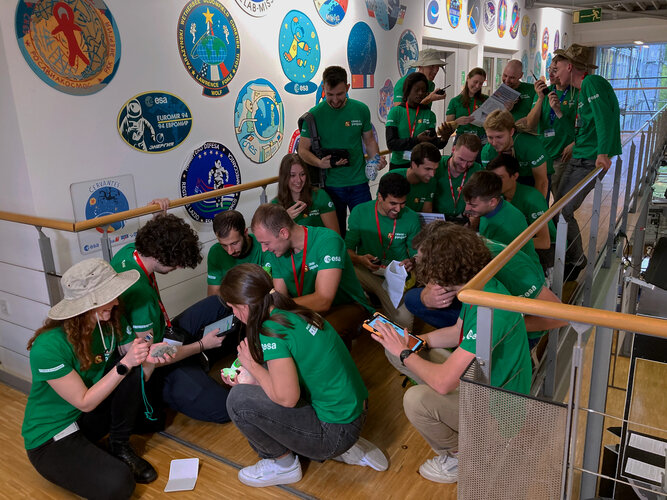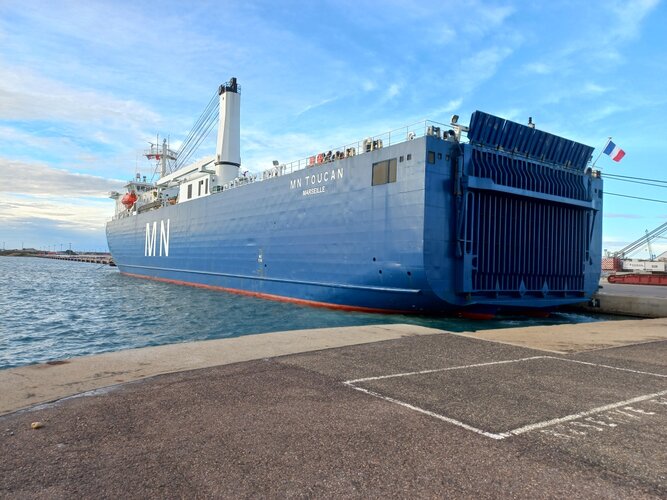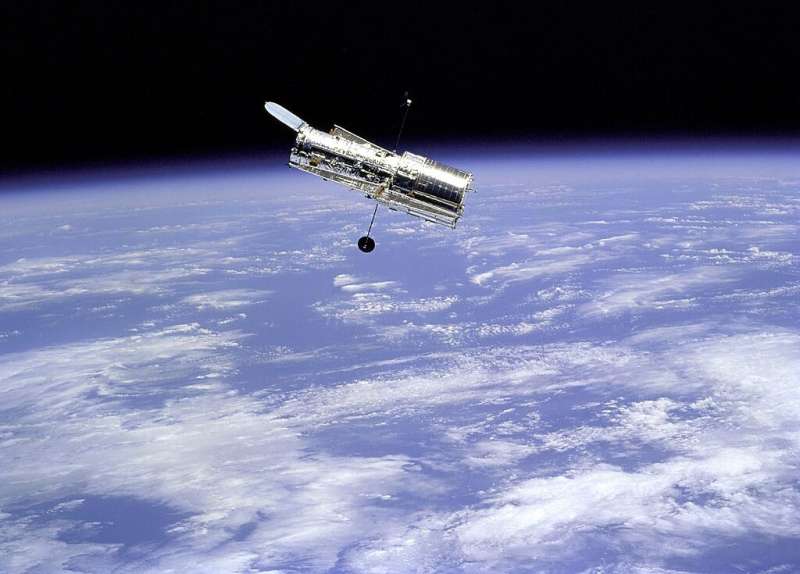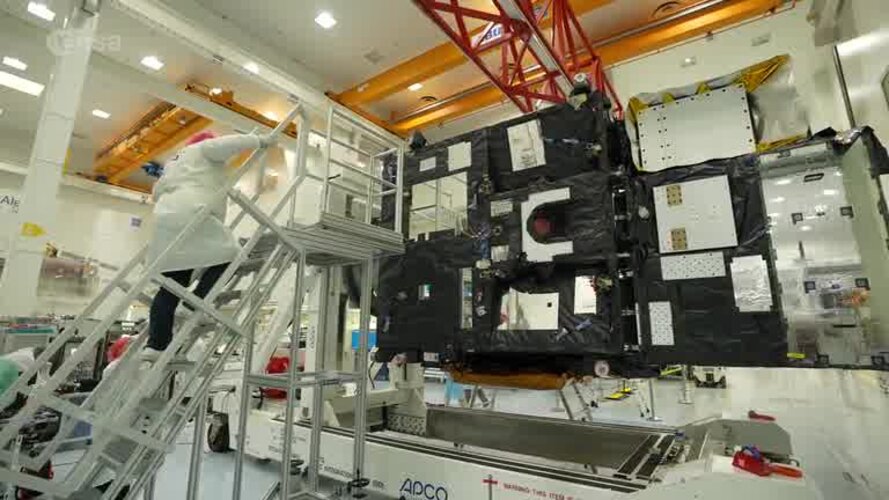Asteroid that formed Vredefort crater bigger than previously believed
Friday, 30 September 2022 10:17 About two billion years ago, an impactor hurtled toward Earth, crashing into the planet in an area near present-day Johannesburg, South Africa. The impactor-most likely an asteroid-formed what is today the biggest crater on our planet.
Scientists have widely accepted, based on previous research, that the impact structure, known as the Vredefort crater, was formed by an object about 15 kilo
About two billion years ago, an impactor hurtled toward Earth, crashing into the planet in an area near present-day Johannesburg, South Africa. The impactor-most likely an asteroid-formed what is today the biggest crater on our planet.
Scientists have widely accepted, based on previous research, that the impact structure, known as the Vredefort crater, was formed by an object about 15 kilo Once upon a rover
Friday, 30 September 2022 10:17 Once upon a time - early 2013 - there was a small corner room in the Flight Projects building at JPL where the walls and windows were coated in pages and pages of paper. These pages contained the facts and arguments being assembled by the Mars 2020 Science Definition Team, who were asking: what must the next rover to Mars do?
We rearranged those pages over and over during the next few mont
Once upon a time - early 2013 - there was a small corner room in the Flight Projects building at JPL where the walls and windows were coated in pages and pages of paper. These pages contained the facts and arguments being assembled by the Mars 2020 Science Definition Team, who were asking: what must the next rover to Mars do?
We rearranged those pages over and over during the next few mont China's Mars rover reveals more of subsurface
Friday, 30 September 2022 10:17 What does the subsurface of Mars' northern lowlands have in common with a French mille crepe cake? They both consist of a number of layers, according to the latest findings by China's Zhurong Mars rover published in the journal Nature on Monday.
The discovery showed that the evolution of the Martian surface environment is more varied and complex than previously anticipated, experts said. L
What does the subsurface of Mars' northern lowlands have in common with a French mille crepe cake? They both consist of a number of layers, according to the latest findings by China's Zhurong Mars rover published in the journal Nature on Monday.
The discovery showed that the evolution of the Martian surface environment is more varied and complex than previously anticipated, experts said. L Lunar glass shows Moon asteroid impacts mirrored on Earth
Friday, 30 September 2022 10:17 A Curtin-led research team has found asteroid impacts on the Moon millions of years ago coincided precisely with some of the largest meteorite impacts on Earth, such as the one that wiped out the dinosaurs.
The study also found that major impact events on Earth were not stand-alone events, but were accompanied by a series of smaller impacts, shedding new light on asteroid dynamics in the i
A Curtin-led research team has found asteroid impacts on the Moon millions of years ago coincided precisely with some of the largest meteorite impacts on Earth, such as the one that wiped out the dinosaurs.
The study also found that major impact events on Earth were not stand-alone events, but were accompanied by a series of smaller impacts, shedding new light on asteroid dynamics in the i Synthetic lava in the lab aids exoplanet exploration
Friday, 30 September 2022 10:17 The exploration era for the new James Webb Space Telescope (JWST) is getting hot - volcanically hot. A multidisciplinary group of Cornell researchers has modeled and synthesized lava in the laboratory as the kinds of rock that may form on far-away exoplanets. They developed 16 types of surface compositions as a starter catalog for finding volcanic worlds that feature fiery landscapes and oceans
The exploration era for the new James Webb Space Telescope (JWST) is getting hot - volcanically hot. A multidisciplinary group of Cornell researchers has modeled and synthesized lava in the laboratory as the kinds of rock that may form on far-away exoplanets. They developed 16 types of surface compositions as a starter catalog for finding volcanic worlds that feature fiery landscapes and oceans New measurement of stellar neutron source reaction resolves long-standing discrepancies
Friday, 30 September 2022 10:17 The Jinping Underground Nuclear Astrophysics (JUNA) collaboration has reported a recent direct measurement of the cross section of a crucial stellar neutron source reaction, 13C(a,n)16O. The study was published in Physical Review Letters on September 23.
By achieving the most accurate cross sectional measurement of this reaction at astrophysical energies so far, the study has resolved long
The Jinping Underground Nuclear Astrophysics (JUNA) collaboration has reported a recent direct measurement of the cross section of a crucial stellar neutron source reaction, 13C(a,n)16O. The study was published in Physical Review Letters on September 23.
By achieving the most accurate cross sectional measurement of this reaction at astrophysical energies so far, the study has resolved long HawkEye 360 adds new radar and communication signals to RFGeo
Friday, 30 September 2022 10:17 HawkEye 360 Inc., the world's leading commercial provider of space-based radio frequency (RF) data and analytics, has announced two new signals available as part of its RFGeo signal mapping product: VHF and UHF Flex. RFGeo data and analytics provide a new geospatial data layer that enables RF awareness, utilizing the unique data generated by HawkEye 360's satellite constellation to detect and ge
HawkEye 360 Inc., the world's leading commercial provider of space-based radio frequency (RF) data and analytics, has announced two new signals available as part of its RFGeo signal mapping product: VHF and UHF Flex. RFGeo data and analytics provide a new geospatial data layer that enables RF awareness, utilizing the unique data generated by HawkEye 360's satellite constellation to detect and ge ESA selects Harmony as 10th Explorer mission
Friday, 30 September 2022 10:17 Following preparatory activities and a stringent process ESA Member States today formally selected Harmony for implementation as the tenth Earth Explorer mission within the FutureEO programme. This unique satellite mission concept is, therefore, now set to become a reality to provide a wealth of new information about our oceans, ice, earthquakes and volcanoes - which will make significant contri
Following preparatory activities and a stringent process ESA Member States today formally selected Harmony for implementation as the tenth Earth Explorer mission within the FutureEO programme. This unique satellite mission concept is, therefore, now set to become a reality to provide a wealth of new information about our oceans, ice, earthquakes and volcanoes - which will make significant contri Moon science generation
Friday, 30 September 2022 08:45 Image:
Image:
What do you call three or more space fanatics? Interns.
Imagine landing your dream internship at the European Astronaut Centre (EAC), and then being unable to go into work. A group of excellent young professionals found themselves in this situation during the pandemic.
This week, however, 23 of these interns finally got their opportunity to visit the home of Europe’s Astronaut corps. The interns had been working on a range of projects developing tools to support astronaut training for missions to the Moon and beyond. Upon visiting, they were immediately immersed in the centre’s activities.
The group, imaged here logging data into
New rocket company fails to achieve launch on 2nd attempt
Friday, 30 September 2022 08:21A year after its first rocket launch failed, a new aerospace company was unsuccessful early Friday in its second attempt to place multiple satellites into orbit.
Firefly Aerospace's Alpha rocket was unable to lift off from Vandenberg Space Force Base, California, and follow a planned arc over the Pacific Ocean toward space.
A live video feed showed the launch countdown go to zero and then abort at 12:52 a.m. Friday.
"The vehicle went into auto abort after ignition. This is designed into the system to ensure safety," the company said in a Twitter post. "The team scrubbed tonight's launch attempt and is reviewing data to determine our next launch window."
The rocket's payload included multiple small satellites designed for a variety of technology experiments and demonstrations as well as educational purposes.
The mission, dubbed "To The Black," was the company's second demonstration flight of its entry into the market for small satellite launchers.
The first Alpha was launched from Vandenberg on Sept. 2, 2021, but did not reach orbit.
One of the four first-stage engines shut down prematurely but the rocket continued upward on three engines into the supersonic realm where it tumbled out of control.
The rocket was then intentionally destroyed by an explosive flight termination system.
Europe’s new weather satellite sets sail
Friday, 30 September 2022 07:45
The first of Europe’s Meteosat Third Generation satellites is now safely aboard a ship and making its way across the Atlantic to French Guiana where it will be readied for liftoff in December. Once launched into geostationary orbit, 36 000 km above Earth, this new satellite, which carries two new extremely sensitive instruments, will take weather forecasting to the next level.
Earth from Space: Melt ponds in West Greenland
Friday, 30 September 2022 07:00
During spring and summer, as the air warms up and the sun beats down on the Greenland Ice Sheet, melt ponds pop up. Melt ponds are vast pools of open water that form on both sea ice and ice sheets and are visible as turquoise-blue pools of water in this Copernicus Sentinel-2 image.
NASA, SpaceX study boosting Hubble to extend its lifespan
Friday, 30 September 2022 06:38
NASA and SpaceX have agreed to study the feasibility of awarding Elon Musk's company a contract to boost the Hubble Space Telescope to a higher orbit, with a goal of extending its lifespan, the US space agency said Thursday.
The renowned observatory has been operating since 1990 about 335 miles (540 kilometers) above Earth, in an orbit that slowly decays over time.
Hubble has no on-board propulsion to counter the small but still present atmospheric drag in this region of space, and its altitude has previously been restored during Space Shuttle missions.
The proposed new effort would involve a SpaceX Dragon capsule.
"A few months ago, SpaceX approached NASA with the idea for a study whether a commercial crew could help reboost our Hubble spacecraft," NASA's chief scientist Thomas Zurbuchen told reporters, adding the agency had agreed to the study at no cost to itself.
New weather satellite on its way to launch
Friday, 30 September 2022 06:00 Video:
00:04:04
Video:
00:04:04
The final pre-launch preparations for the first Meteosat Third Generation (MTG) satellite are underway. The first satellite, called MTG-I1, built by a European industrial consortium led by Thales Alenia Space carries two imagers: an advanced Flexible Combined Imager and, in a first for Europe, a Lightning Imager that will allow the earlier detection of storms and extreme weather events, as well as improve aviation safety.
Building on the long-standing partnership between ESA and Eumetsat, the MTG-I1 will be one of six satellites operating in a fleet, of three at a time, to ensure the continuity of data from
Senate confirms Saltzman as next chief of the U.S. Space Force
Thursday, 29 September 2022 23:02
The Senate on Sept. 29 confirmed the nomination of Lt. Gen. B. Chance Saltzman for promotion to general and assignment as the chief of space operations of the U.S. Space Force

